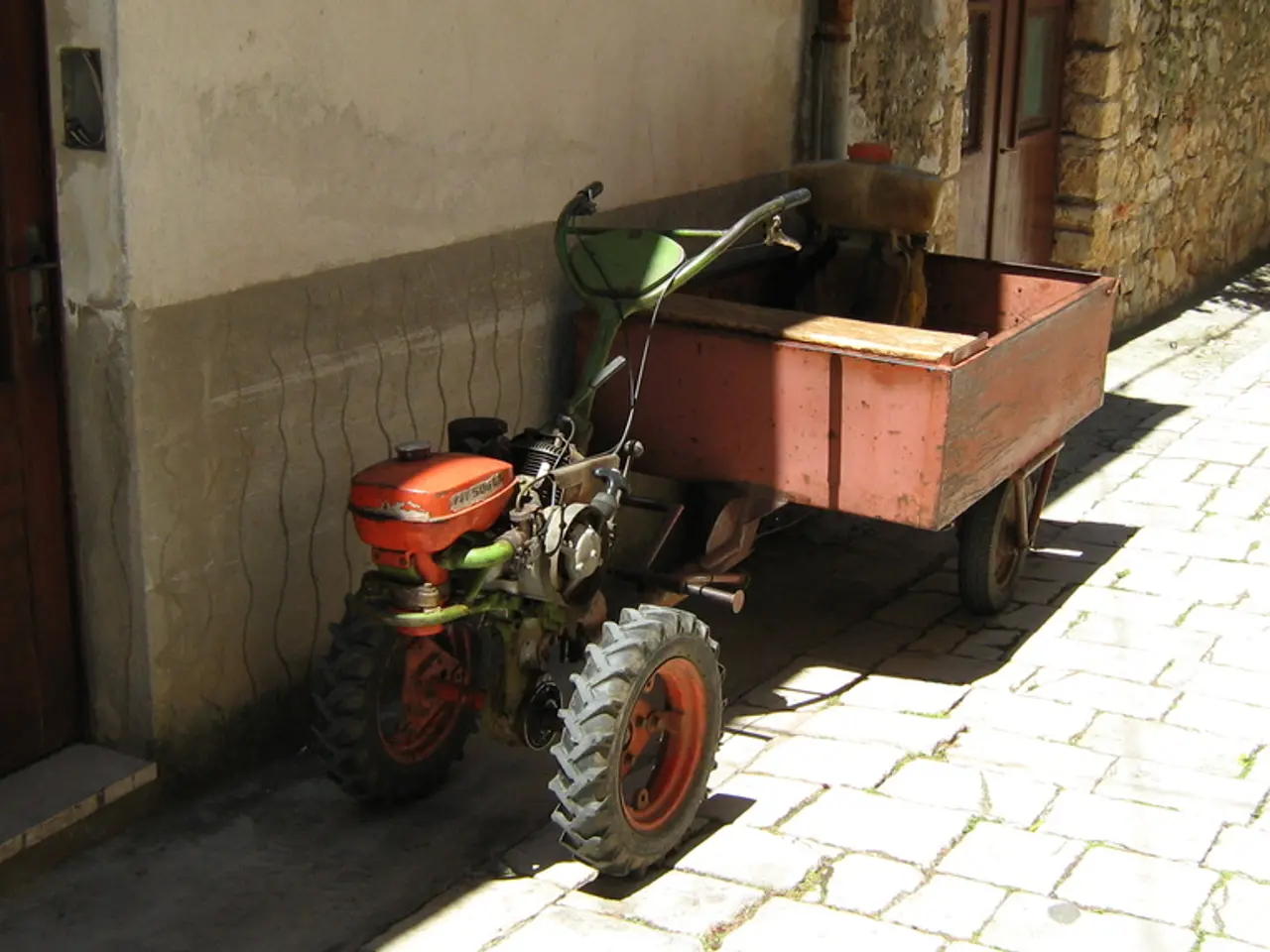Equipment for Garden Maintenance: Rototillers and Compact Tractors
In the world of gardening and farming, the use of rototillers and two-wheeled tractors is commonplace. These powerful machines make light work of soil preparation, but it's essential to remember that safety should always be a top priority. Here are some key precautions for safe operation and maintenance of these machines.
Before Operation
- Ensure that the operator is trained and familiar with the machine controls.
- Inspect the machine thoroughly for loose screws, misalignment, binding of moving parts, cracks, or broken parts that could affect safety.
- Make sure the engine governor is set correctly and not tampered with, as it controls maximum safe engine speed.
- Clear the working area of debris and obstacles to avoid accidents or damage.
During Operation
- Always operate the machine from behind, never stand in front or pass the machine when the engine is running.
- Do not force the machine; use it only for the tasks it was designed for, at the correct operating speed.
- Keep hands, fingers, and feet away from moving parts such as tiller blades or machinery base to prevent injury.
- Hold the handles firmly with both hands to maintain control.
Maintenance
- Always shut off the engine and ensure all moving parts have stopped before cleaning, inspecting, repairing, or adjusting.
- Disconnect the spark plug wire or unplug the tiller before maintenance to prevent accidental starting.
- Use only identical replacement parts when servicing to maintain safety and performance.
- Regularly clean the machine after use to remove debris and prevent rust or blockage.
- Lubricate designated parts according to the manufacturer's guidelines.
- Store the machine out of reach of children and do not allow untrained persons to operate it.
Environmental and Safety Compliance
- Follow proper disposal laws for gas, oil, and other fluids.
- Wear appropriate personal protective equipment as per safety regulations, such as safety glasses with side shields or goggles, leather gloves, safety boots or hard-soled shoes, and ear protection.
- Review the operator's manual for recommended maintenance and safety procedures.
By adhering to these precautions, you can promote safe use, prolong machinery life, and minimise the risk of injury or damage. Happy and safe gardening or farming!
- To ensure food safety, it's crucial to maintain the same level of care in home-and-garden settings as in professional farming or gardening. properly maintaining the machinery used, such as rototillers and two-wheeled tractors, and implementing safety measures can help prevent soil contamination.
- Adopting a safety-first mindset extends beyond just the gardening or farming practices. This could also include integrating safe gadgets and technology, such as automation systems, into your lifestyle, ensuring a safer and more efficient home-and-garden experience.
- Awareness of soil quality plays a significant role in food safety, but it's also essential to consider the environment and safety implications when choosing garden tools like rototillers. Opting for eco-friendly and safer machinery can help lessen the impact on the soil, while promoting a safer lifestyle and home-and-garden setting.




